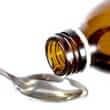Background
- Syrup of ipecac, used medicinally since the 1500s, is made from the dried root and rhizome (underground stem) of the ipecacuanha plant (Cephaelis ipecacuanha). This plant grows in Brazilian rainforests and other locations in Central and South America. Ipecac's primary medicinal use is to cause vomiting after a person takes in a toxic substance. The induced vomiting reportedly removes toxic substances from the stomach, hinders their absorption, and speeds recovery. Currently, many experts recommend abandoning ipecac use in both home and clinical settings and employing other therapies such as activated charcoal, which has been shown to be effective and lacking in potential for abuse.
- Another ipecac use is to treat gastrointestinal infections caused by amoeba. While ipecac is active against the amoebic form of dystentery (diarrhea), it is ineffective against bacterial dysentery.
References
Natural Standard developed the above evidence-based information based on a thorough systematic review of the available scientific articles. For comprehensive information about alternative and complementary therapies on the professional level, go to . Selected references are listed below.
- Albertson TE, Derlet RW, Foulke GE, et al. Superiority of activated charcoal alone compared with ipecac and activated charcoal in the treatment of acute toxic ingestions. Ann Emerg Med 1989;18(1):56-59.
View Abstract - Bader AA, Kerzner B. Ipecac toxicity in "Munchausen syndrome by proxy". Ther Drug Monit 1999;21(2):259-260.
View Abstract - Bond GR. Home syrup of ipecac use does not reduce emergency department use or improve outcome. Pediatrics 2003;112(5):1061-1064.
View Abstract - Brinker AD Nourjah P. Trends in the use of ipecac in the ED setting: data from the 1992-2002 NHAMCS-ED (letter). Am J Emerg Med 2006;24(6):759-761.
View Abstract - Greene S, Harris C, Singer J. Gastrointestinal decontamination of the poisoned patient. Pediatr Emerg Care 2008;24(3):176-186.
View Abstract - Kendrick D, Smith S, Sutton A, et al. Effect of education and safety equipment on poisoning-prevention practices and poisoning: systematic review, meta-analysis and meta-regression. Arch Dis Child 2008;93(7):599-608.
View Abstract - Lee MR. Ipecacuanha: the South American vomiting root. J R Coll Physicians Edinb. 2008;38(4):355-360.
View Abstract - Litovitz T, Clancy C, Korberly B, et al. Surveillance of loperamide ingestions: an analysis of 216 poison center reports. J Toxicol Clin Toxicol 1997;35(1):11-19.
View Abstract - Meadows-Oliver M. Syrup of ipecac: new guidelines from the AAP. J Pediatr Health Care 2004;18(2):109-110.
View Abstract - Pond SM, Lewis-Driver DJ, Williams GM, et al. Gastric emptying in acute overdose: a prospective randomised controlled trial. Med J Aust 1995;163(7):345-349.
View Abstract - Position paper: Ipecac syrup. J Toxicol Clin Toxicol 2004;42(2):133-143.
View Abstract - Rashid N. Medically unexplained myopathy due to ipecac abuse. Psychosomatics 2006;47(2):167-169.
View Abstract - Silber TJ. Ipecac syrup abuse, morbidity, and mortality: isn't it time to repeal its over-the-counter status? J Adolesc Health 2005;37(3):256-260.
View Abstract - Steffen KJ, Mitchell JE, Roerig JL, et al. The eating disorders medicine cabinet revisited: a clinician's guide to ipecac and laxatives. Int J Eat Disord 2007;40(4):360-368.
View Abstract - Tandberg D, Diven BG, McLeod JW. Ipecac-induced emesis versus gastric lavage: a controlled study in normal adults. Am J Emerg Med 1986;4(3):205-209.
View Abstract







